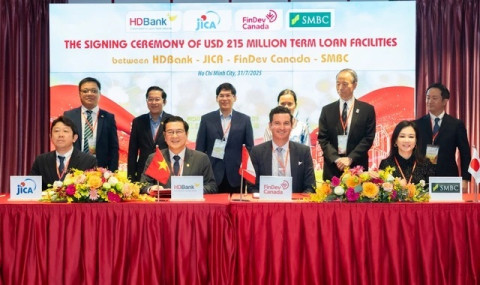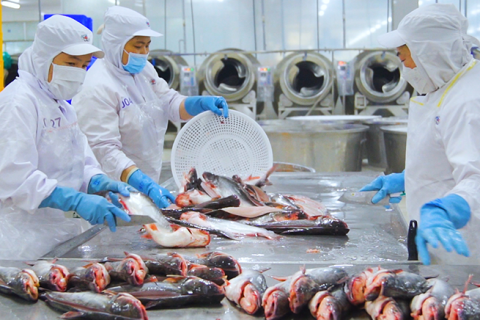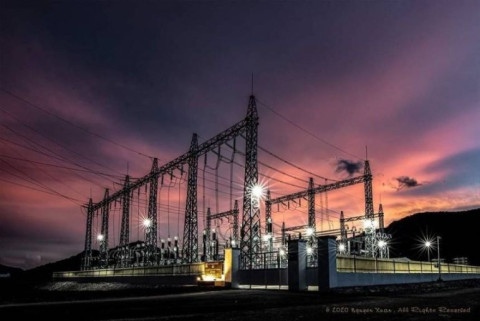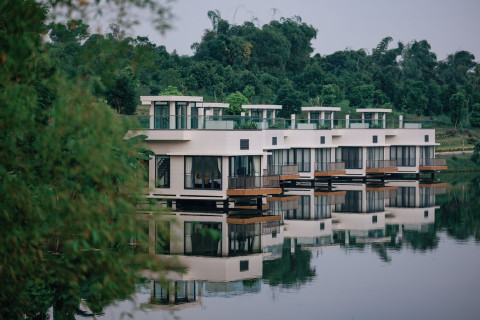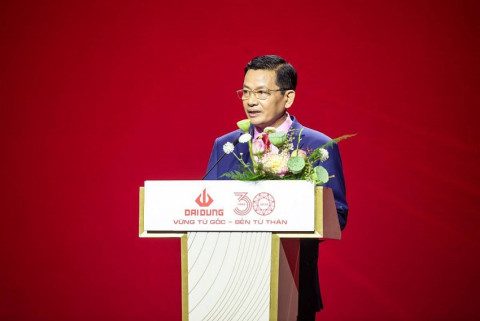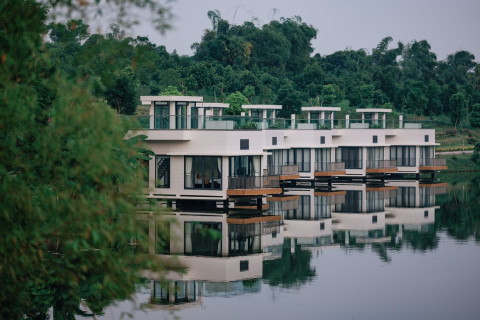"Greening" public transport - a step towards sustainability for the city
- 139
- Brand
- 22:11 23/08/2023
DNHN - From establishing goals to enacting supportive policies, the transformation of green buses in Hanoi is being carried out with extensive coordination between government agencies and transportation experts.
Hanoi is implementing a significant plan to improve the living environment and reduce greenhouse gas emissions from the transportation industry. According to the Hanoi Department of Transport, there are currently 2,279 buses in the city, but only 277 of them use clean and environmentally friendly fuel, representing less than 14% of the network.
Recognizing the importance of reducing air pollution and promoting the use of clean energy, the city has established a significant objective: to completely replace traditional fuel-powered buses with fuel-powered buses. Use renewable energy. The plan specifies that beginning in 2025, all new or replacement buses will be powered by electricity or clean energy; by 2030, at least 50 percent of public transportation will use clean energy; and by 2050, the ultimate goal is for all buses and taxis to run on clean energy.
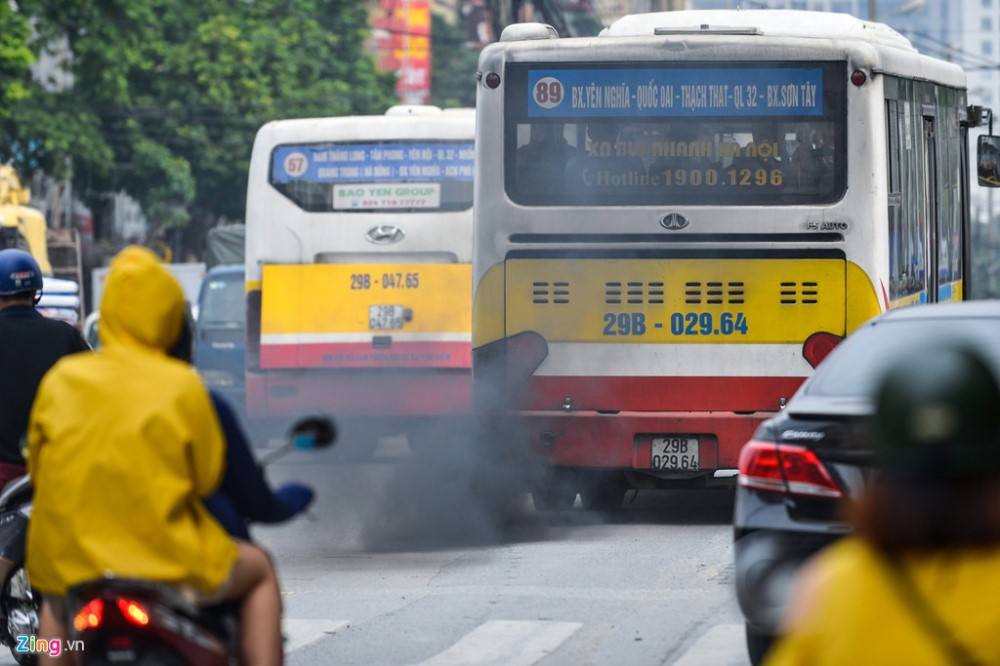
To implement this plan, a series of measures have been implemented. First, from 2025 to 2035, a total of 225 buses, or approximately 21.3% of the total number of existing vehicles, will be considered for the conversion program. The buses will be gradually replaced after the expiration date. The first phase (2025-2030) will concentrate on achieving 50-60% green buses, while the second phase (2030-2035) will aim for 90-100%.
Local governments have also demonstrated their support through financial assistance. The city budget will subsidize fifty percent of the loan interest for the first five years to invest in transportation infrastructure and acquire clean energy buses. This will aid in reducing investment costs for transport companies and promote the transition to renewable energy.
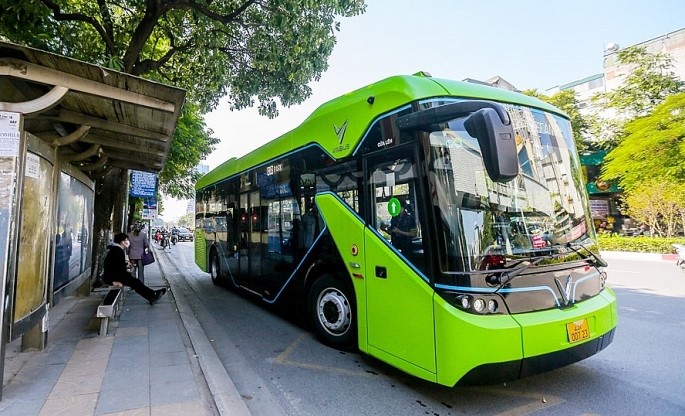
However, Hanoi faced numerous obstacles during implementation, including initial investment costs and interest expenses. Choosing a reasonable structure between electric buses and buses powered by renewable energy is crucial. To ensure that "greening" is truly effective, existing infrastructure and energy availability must be taken into account.
Transport experts have also suggested prioritizing the conversion of high-impact bus routes, such as those in the central urban area and those in the central urban area, to achieve the goal of "greening" buses. connecting to major transportation hubs such as airports, bus stations, and train stations.
From establishing goals to enacting supportive policies, the transformation of green buses in Hanoi is being carried out with extensive coordination between government agencies and transportation experts. This is a crucial step in creating a sustainable living environment and making Hanoi a greener and more eco-friendly city.
P.V (t/h)
Related news
- From New Year messages of World Leaders to the “new rules” of the Global economy in 2026
- Connecting Leaders, Shaping the Future: Strategic Leadership Planning Meeting – CorporateConnections Hanoi A
- Sunlight - Unilever Vietnam Recognized for Outstanding Contributions to the National Initiative Supporting Women Entrepreneurs
- Deputy Prime Minister Nguyễn Chí Dũng: “The country’s major challenges weigh heavily on my mind — and we must resolve them together.
- Unitsky String Technologies signs cooperation agreements with three Vietnamese partners, opening a new direction for smart mobility and sustainable development
- When artists do business – livelihood is no poetry!
- Before the D‑day to abolish flat‑rate tax: Fear of technology and costs leave small traders struggling to adapt
- Vietnamese enterprises at a crossroads: the impact of a potential US–China deal
- "Digital technicians" must not be forgotten if Vietnam aims to meet its strategic goals
- HDBank: Impressive profit growth, leading in profitability and advancing international integration
- TNI King Coffee sued for over VND 5 Billion in unpaid debts
- VINASME and Jeonnam Technopark Sign MOU on technology cooperation, human resource training, and trade promotion
- Vietnamese entrepreneurs strengthen ASEAN connectivity in the digital iIntegration era
- Prime Minister: Vietnam aims to become a regional logistics hub
- Vietnam upgraded to Secondary Emerging Market by FTSE Russell
- Hanoi’s economy grows 7.92% in first nine months of 2025, FDI surges nearly threefold
- Vietnam’s strong gdp growth fails to ease labor market distress
- US tariffs on Brazil propel Vietnam’s pangasius into global spotlight
- VietLeap AI Accelerator launches: A strategic springboard for Vietnam’s AI startups
- CICON expands strategic alliances: A new step forward in Vietnam–Korea business connectivity
Đọc thêm Brand
Hoàng Hải Anh and his young peers launch MR. Burgers – a Halal dining destination in Hanoi
At the age of 18, Hoàng Hải Anh (Haris) and his friends have introduced MR. Burgers, bringing the clean Halal food experience to visitors in Hanoi.
SK Innovation and HD Hyundai (South Korea) step up cooperation with Khánh Hòa Province (Vietnam)
The new cooperation and investment expansion plans of South Korea’s leading conglomerates reaffirm Khánh Hòa’s growing appeal in the eyes of international investors.
A trade fair organizer surprises by joining the ranks of top-earning listed companies
Financial results for Q2 and the first half of 2025 have been announced by numerous companies listed on the Vietnamese stock market.
HDBank secures USD 215 million syndicated loan from JICA, SMBC, and FinDev Canada
HDBank has signed a syndicated loan agreement worth USD 215 million with three international financial institutions: Sumitomo Mitsui Banking Corporation (SMBC), FinDev Canada, and the Japan International Cooperation Agency (JICA).
Sao Mai Group’s pangasius export segment embraces new opportunities
IDI – a member of Sao Mai Group – is building its third factory, aiming to significantly enhance export capacity to capitalize on new opportunities in the U.S. market.
The foundational mark of pioneers in renewable energy amidst an evolving legal framework
Vietnam’s renewable energy journey was marked by bold early investment at a time when the legal framework was still taking shape.
LAMORI – The Spirit of Lam Kinh in Every Breath
LAMORI is more than a luxury retreat—it is a harmonious convergence of boundless nature and sacred historical roots.
The Đại Dũng Group: A 30-Year journey of developing a sustainable value chain
In the context of globalization and sustainable development trends, Đại Dũng Group stands out with its 30-year journey in the fields of mechanical manufacturing, construction, and steel structure.
Rediscovering connection – a journey of discovery at LAMORI
LAMORI Resort & Spa is more than just a retreat; it is a destination for souls seeking reconnection, where every moment brings a meaningful experience.
Southern Vietnamese woman takes Ngoc Linh netted rice paper to all corners of the world
The Cai Be craft village has long been famous for many specialties of the Southern region of Vietnam. However, if it weren't for an unexpected event over 20 years ago, people would not know how Ngoc Linh netted rice paper has spread globally.





